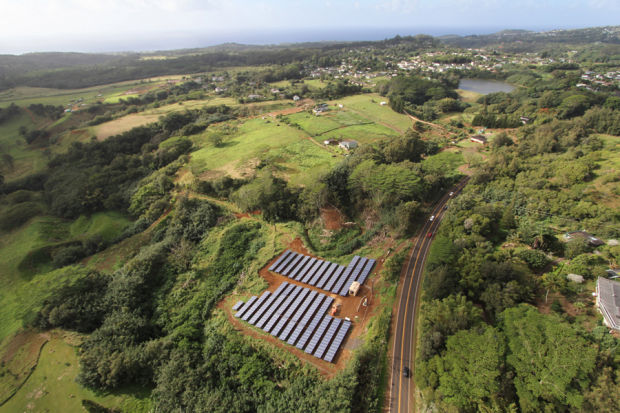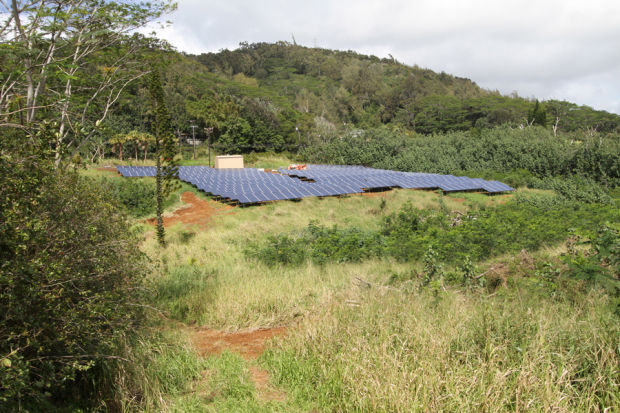LAWAI — Moving acreage from blight to productive is no easy task. But farmer and former Kaua‘i County Council member Daryl Kaneshiro of ‘Oma‘o Ranch Lands decided he was up to the challenge. “It’s been satisfying to take that land,
LAWAI — Moving acreage from blight to productive is no easy task.
But farmer and former Kaua‘i County Council member Daryl Kaneshiro of ‘Oma‘o Ranch Lands decided he was up to the challenge.
“It’s been satisfying to take that land, clean it up and do something really productive for the island,” Kaneshiro said in an interview with the Kaua‘i Island Utility Cooperative recently.
Two years ago, he took an area located alongside Kaumuali‘i Highway near Lawa‘i that was covered in rusting cars and parts and overgrown by wild grasses and trees, and he developed it as a solar farm to provide power to KIUC.
In working with MP2 Hawai‘i Partners, the acreage is now home to a 300-kilowatt fixed tilt solar array, which Jim Kelly, communications manager of KIUC, said will produce enough electricity to power about 190 homes on the island.
He said it represents about 40,000 gallons of diesel annually that KIUC won’t have to buy.
“The fixed tilt system is the easy kind to take care of,” said Drew Bradley, Hawai‘i general manager for REC Solar, who served as contractor for the solar array on Kaneshiro’s farm.
Bradley said the system “kicks on at 7 a.m., and goes to bed at 6 p.m.,” with the most productive time being from 9 a.m. to 3 p.m.
He said that the project took more than a year for the Hawai‘i Public Utilities Commission to approve, but that the actual construction was completed in about six weeks.
The array uses a “snap and rack” system of glass panels that are set at a 20-degree angle, allowing rainwater to run off.
Bradley said the panels will be cleaned periodically to maximize solar input. “Lots of people are growing weeds,” Bradley said, “But they could be growing the electrical grid.”
He said MP2 Hawai‘i Partners entered into a 20-year power purchase agreement with Kaua‘i Island Utility Cooperative, setting the purchase price at 20 cents per kilowatt hour for the power generated.
“Daryl Kaneshiro raises cows. He raises sheep. And now,” Bradley said, “he raises electricity.”



